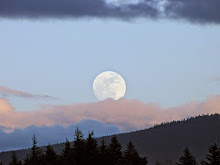It isn't the price. It's the content.
The
Oregonian is not trustworthy.
Too many articles are factually inaccurate or misleading. Too often the reports that I initially say "That can't be right" about end up, with a little research, to be shown either fudging facts, leaving out crucial facts, or using facts to imply a conclusion that they don't support.
Take the case of the front page story in last Wednesday's edition: "
Your insurance bills soar as state nods". The article by Bill Graves begins:
"State regulators have approved every rate increase by Oregon's largest health insurance companies over the past three years, trimming the requests in only seven of 40 cases, records obtained by The Oregonian show."
Maybe the precise facts quoted are true, but the spin about what those facts mean doesn't match what I know to be fact.
I read the headline and first part of the article and said, "That can't be true." I know what my health insurance rates have been in the last three years, and they have not "soar"ed. Grimes goes on:
The result of Oregon's regulatory oversight: Average premiums for individuals and small businesses have climbed by more than 140 percent in seven years.
Even allowing for Grimes' expansion of the period to seven years, my rates increased 55% during that time (under 8% a year) not the 140% (20% a year) he claims as average.*
Maybe I'm just lucky and have found the Oregon wonder rate**--though my plan is one of the seven that the
Oregonian lists in its charts.

Included is a chart of some family rates from four Oregon health insurance companies for the last three years. As can be seen from the chart, ODS's rates have actually gone down and Kaiser's have been basically flat for the last three years. Providence premiums have gone up, but only 4% a year. That's not "soar"ing in my book. Clear Choice has had a 9% a year increase.
Clear Choice's increase looks kind of bad until you compare it to Oregon's major, state-subsidized universities. Portland State University's tuition fees increased an average of 11.8% a year and University of Oregon's tuition fees increased about 12.7% a year for the same period
2007-
2010. One assumes that Oregon universities aren't trying to gouge students to raise salaries (which is one implication of this article with its executive pay chart***).

Even agreeing that 9% is high--that's less than half of what it takes each year to get to the "soar"ing 140% over a 7 year period.
I don't have a financial interest in any health insurance company. I don't own stock in one and never worked for one. However, I personally pay the monthly health insurance premium rather than having it paid invisibly by an employer. So, I know what the rate is and what it has been for the last three years and more. Further, because I can change my health insurance, I know what it has been for a few other major plans as well as the one I have chosen. The figures are nowhere near the
Oregonian's 140%.
Why is the
Oregonian spinning this story and putting it on the front page? Maybe to make the following points?
"Rocketing medical costs and insurance premiums combined with their impact on consumers and the economy is at the center of the fierce congressional debate on how to overhaul the nation's health care system.
"In Oregon, insurance premium increases are forcing small businesses and individuals to join the growing ranks of the uninsured. The number of Oregonians covered by commercial insurance dropped by 88,000 between early 2008 and last summer, many of whom joined the estimated 614,000 residents already without insurance."
[Emphasis added]
Could it be that the 88,000 increase in Oregonians not covered by commercial insurance has something to do with Oregon's high unemployment rate that more than doubled "between early 2008 [
4.9% in January, 2008] and last summer [
12.2% in August, 2009]"? The role played by Oregon having over 113,000 more unemployed in August, 2009 than in January, 2008 was a question the
Oregonian obviously didn't consider when trying to figure out why 88,000 people were dropped from coverage during the same period.
It's not only a waste of money but a waste of time to read material that has to be constantly fact checked and put in a larger context by the reader himself. That's why we don't subscribe to the
Oregonian.
____
*Later in the article Grimes claims that rates for the four year period 2004 to 2008 went up 48% for individuals and 59% for small businesses. That's more than half the seven year period in which rates supposedly increased 140% but the increases are significantly less than half of the 140% increase.
**The individual rate for the Hutchins sisters quoted in the article is about a third lower than the individual rate in my plan.
***Even the most egregious one year pay increase (Kaiser's $257,000) plays out to an increase of less than $2.50 per month for each plan member. For a family of four that equals 8/100ths of 1% (0.0008) of their monthly premium. Not even a speck in a supposed 20% per year increase. So why make such a big deal about executive salary? It's a question the
Oregonian never even considers.













